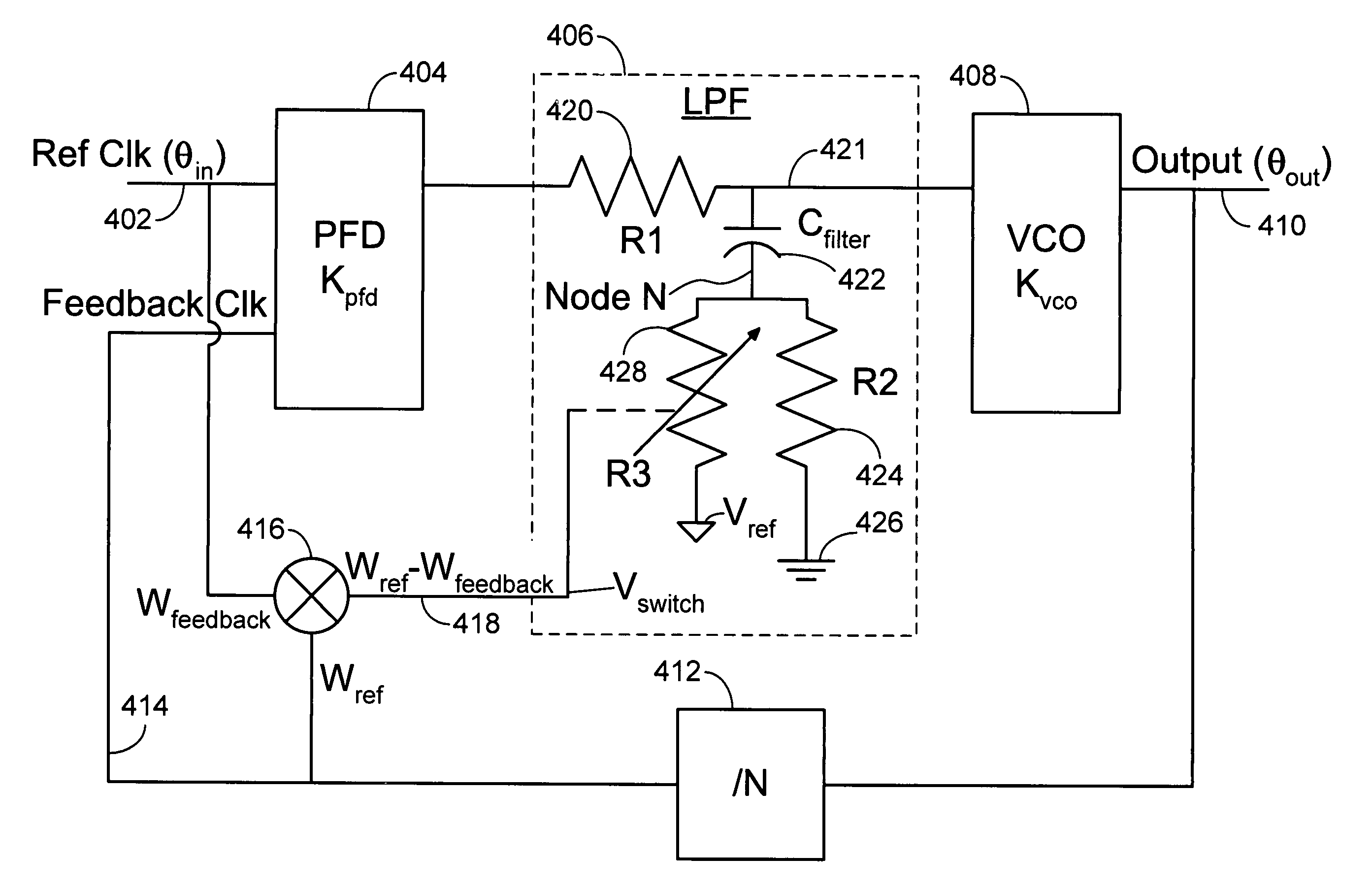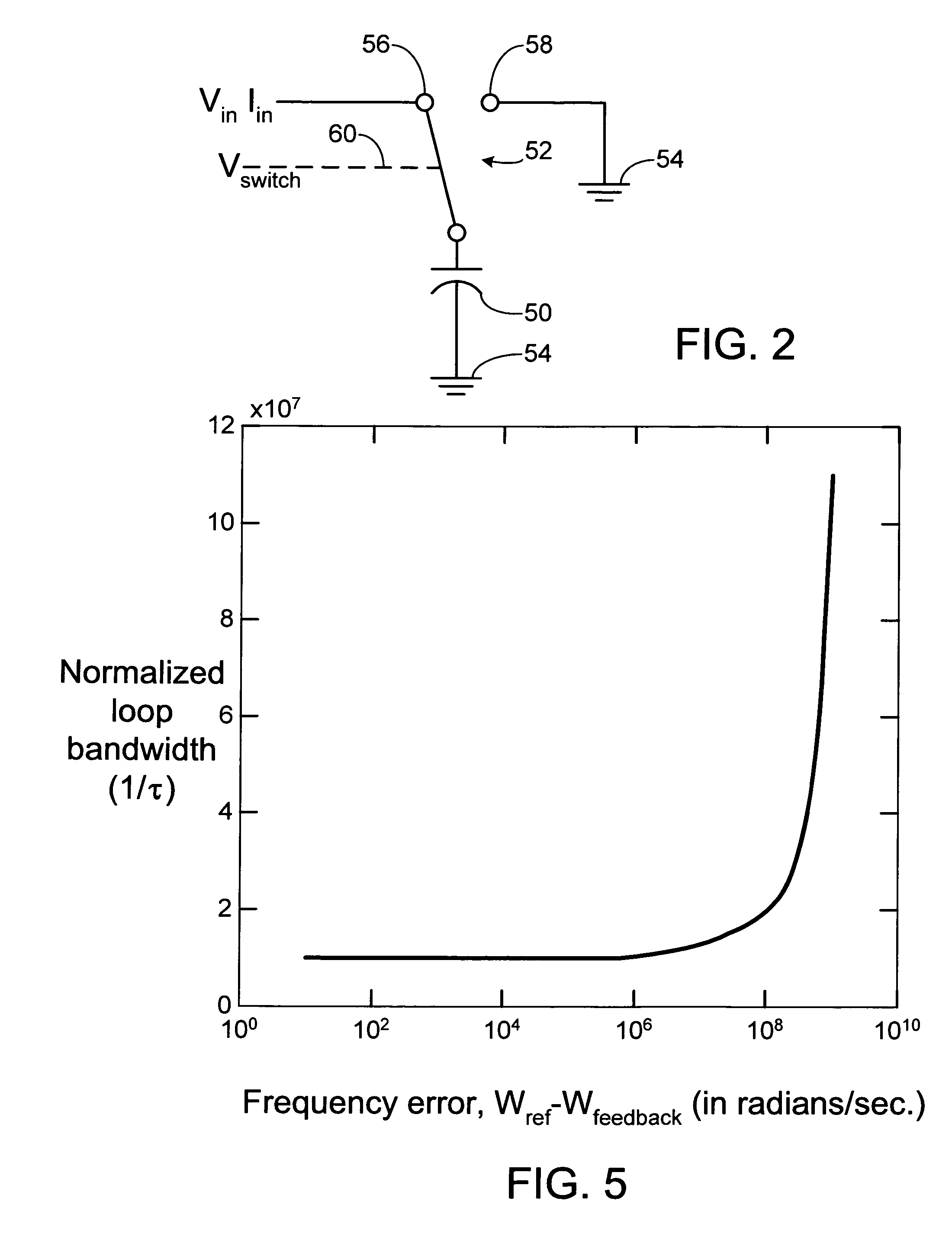Adaptive method and apparatus to control loop bandwidth of a phase lock loop
a phase lock loop and adaptive control technology, applied in the direction of electrical equipment, oscillator generators, pulse automatic control, etc., can solve the problems of reduced bandwidth, increased lock-in-time of the pll, and noise in the reference signal
- Summary
- Abstract
- Description
- Claims
- Application Information
AI Technical Summary
Benefits of technology
Problems solved by technology
Method used
Image
Examples
Embodiment Construction
[0015]In the following discussion, numerous specific details are set forth to provide a thorough understanding of the present invention. However, those skilled in the art will appreciate that the present invention may be practiced without such specific details. In other instances, well-known elements have been illustrated in schematic or block diagram form in order not to obscure the present invention with unnecessary detail.
[0016]In FIG. 1, a reference clock signal is applied on a lead 10 to a first input of a PFD (Phase / Frequency Detector) 12. An LPF (Low Pass Filter) 14 is connected between an output of PFD 12 and an input of a VCO (Voltage Controlled Oscillator) 16. Although not required, the frequency of an output signal at an output lead 18 of the VCO is a multiple (or sub multiple) of the reference frequency signal applied on lead 10. Thus a frequency divider or adjuster 20 is used to revise the frequency of the signal on lead 18 to a frequency which is the same as the refere...
PUM
 Login to View More
Login to View More Abstract
Description
Claims
Application Information
 Login to View More
Login to View More - R&D
- Intellectual Property
- Life Sciences
- Materials
- Tech Scout
- Unparalleled Data Quality
- Higher Quality Content
- 60% Fewer Hallucinations
Browse by: Latest US Patents, China's latest patents, Technical Efficacy Thesaurus, Application Domain, Technology Topic, Popular Technical Reports.
© 2025 PatSnap. All rights reserved.Legal|Privacy policy|Modern Slavery Act Transparency Statement|Sitemap|About US| Contact US: help@patsnap.com



